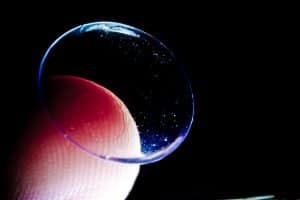
Many people rely on contact lenses to improve their vision. But these sight-correcting devices don’t last forever — some are intended for a single day’s use — and they are eventually disposed of in various ways. Now, scientists are reporting that throwing these lenses down the drain at the end of their use could be contributing to microplastic pollution in waterways.
Lenses that are washed down the drain ultimately end up in wastewater treatment plants. Contacts tend to be denser than water, which means they sink, and this could ultimately pose a threat to aquatic life, especially bottom feeders that may ingest the contacts.
Analyzing what happens to these lenses is a challenge for several reasons. First, contact lenses are transparent, which makes them difficult to observe in the complicated milieu of a wastewater treatment plant. Further, the plastics used in contact lenses are different from other plastic waste. Contact lenses are instead frequently made with a combination of poly(methylmethacrylate), silicones and fluoropolymers to create a softer material that allows oxygen to pass through the lens to the eye. So, it’s unclear how wastewater treatment affects contacts.
Date: August 19, 2018
Image: Google Images
Coordinator: EnvGuide Team
Translator: Yuanji Li, Dimin Fan
Source: https://www.sciencedaily.com/releases/2018/08/180819160710.htm
